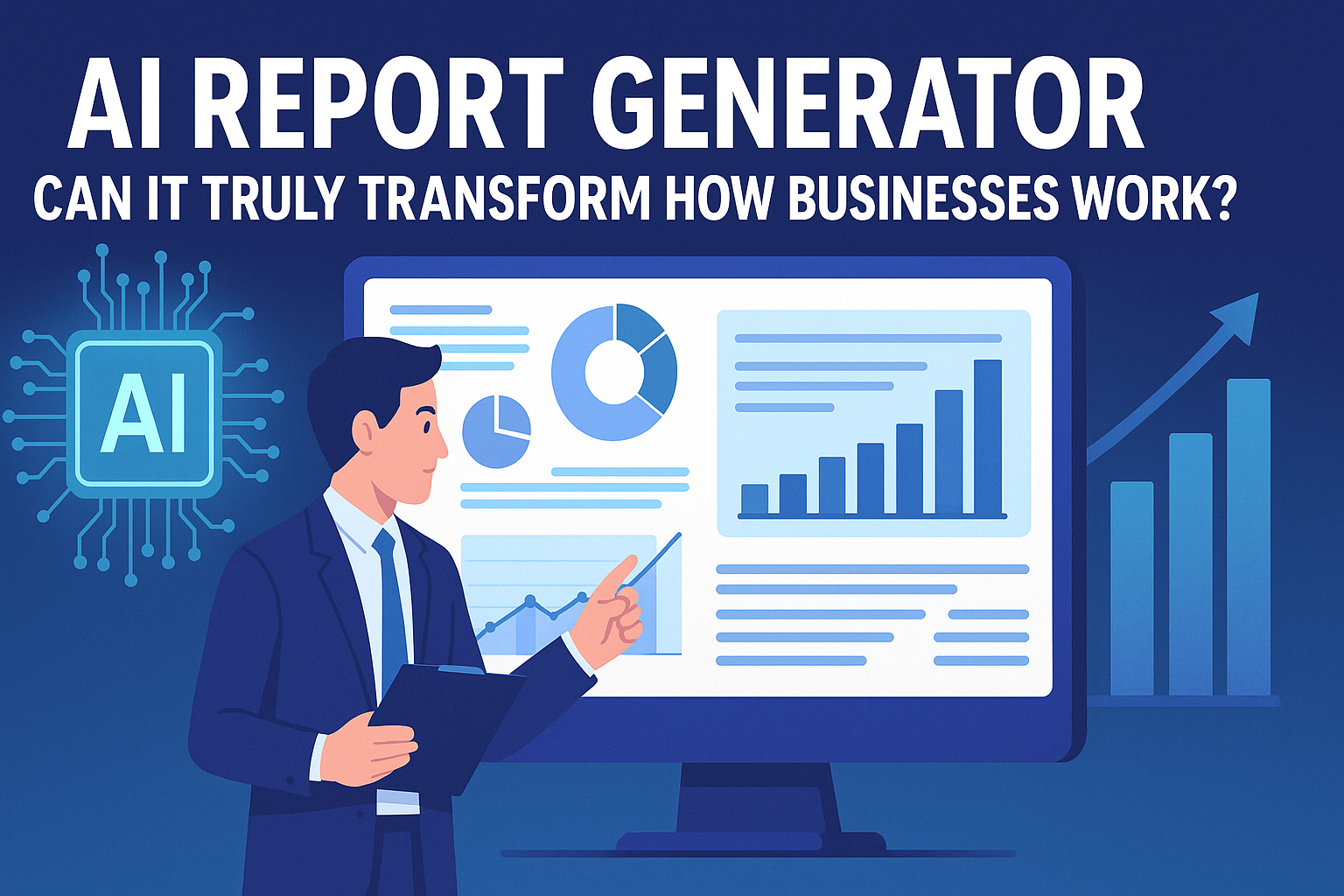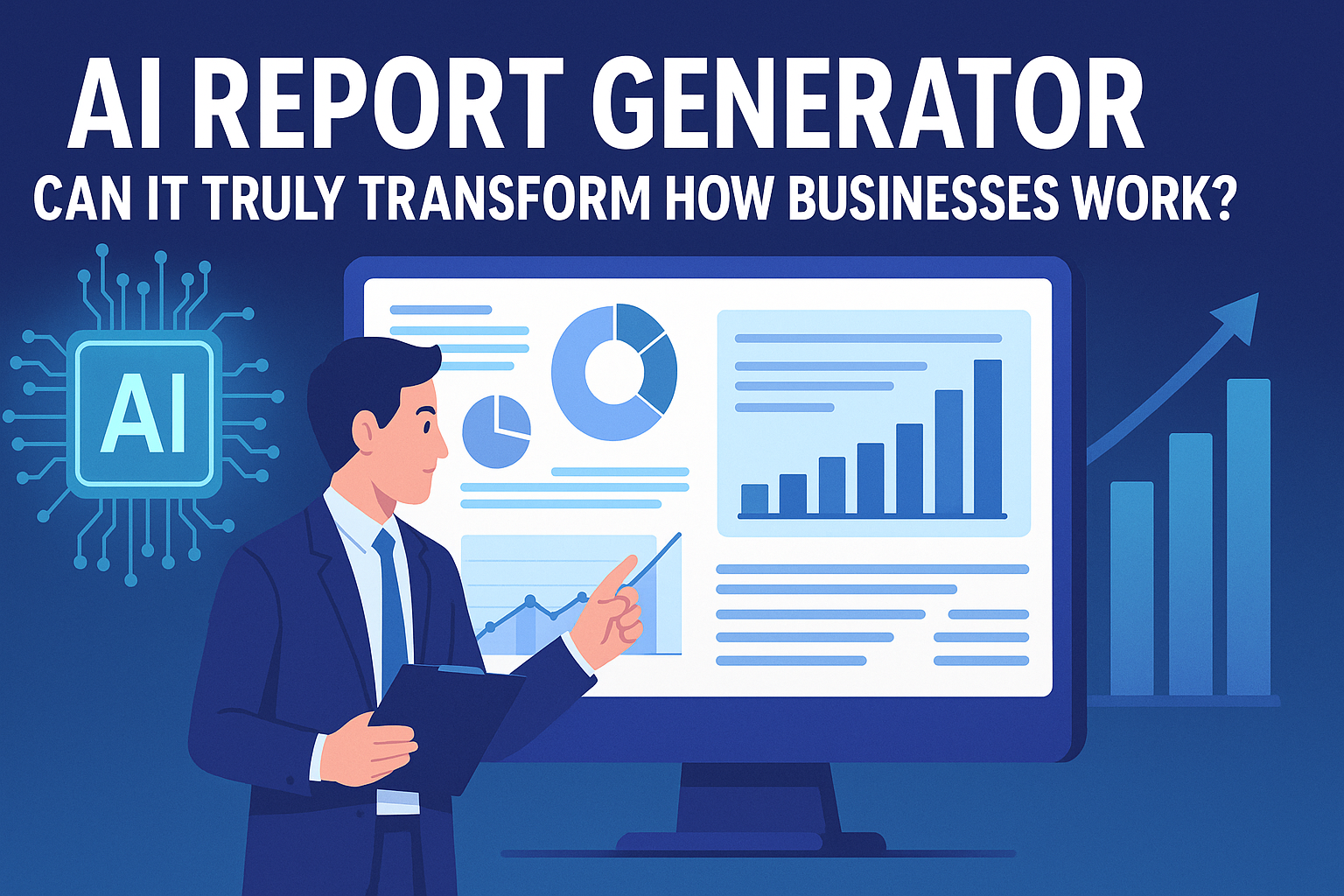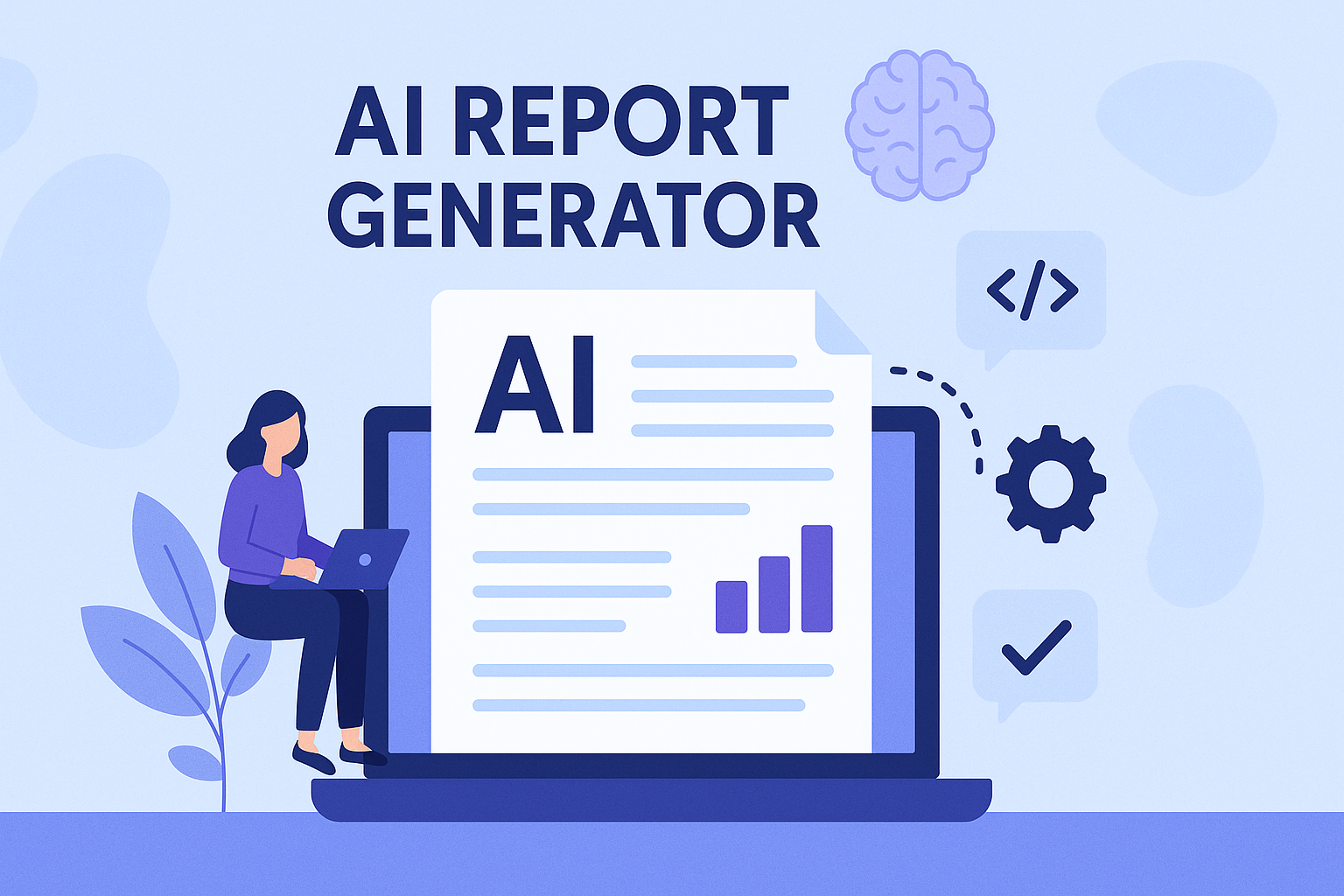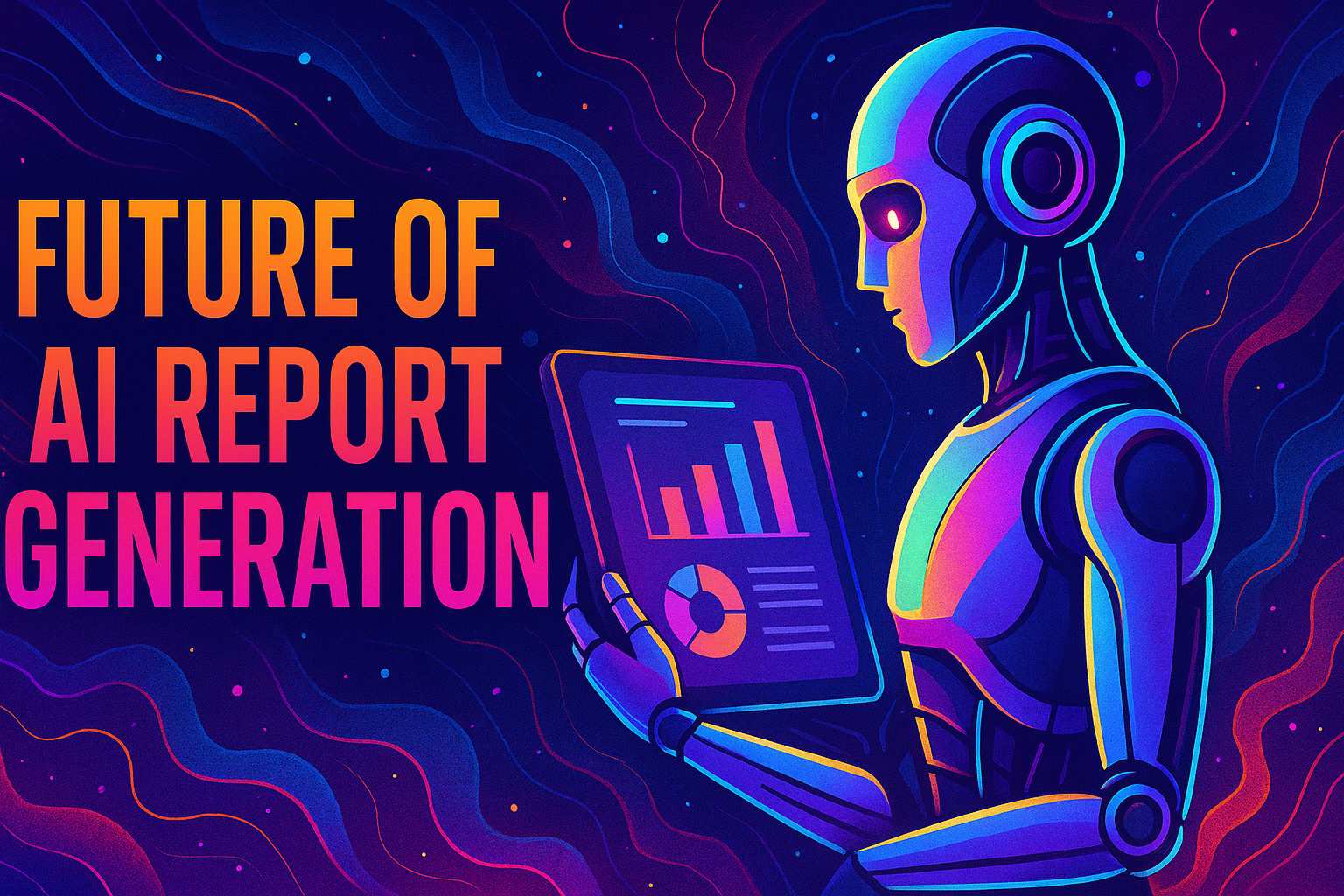AI Report Generator: Can It Truly Transform How Businesses Work?

Have you ever wondered why some businesses make faster, smarter decisions while others struggle with endless spreadsheets? The secret often lies in how data is reported and analyzed. An AI report generator answers this need by turning raw numbers into meaningful insights almost instantly. But what exactly is it, and why is it becoming indispensable across industries?
Let’s break it down clearly so you can understand not only what it does, but also why it could be the missing piece in your workflow.
What Is an AI Report Generator?
An AI report generator is a software tool that uses artificial intelligence to automatically create professional, data-driven reports. Instead of manually pulling numbers, formatting charts, or writing summaries, the tool analyzes input data and generates a well-structured report in minutes.
For example:
-
A sales manager can upload monthly sales data and receive a polished performance report highlighting key trends.
-
A financial analyst can instantly view expense breakdowns, projections, and risks without building endless Excel sheets.
In short, it’s a bridge between complex data and clear decision-making.
Why Do Businesses Need It Now More Than Ever?
The volume of data businesses collect today is overwhelming. From customer interactions to financial records, teams are drowning in numbers but often lack the time to interpret them. Here’s why adopting an AI-powered solution is no longer optional:
-
Speed: Reporting manually may take hours or days; AI does it in minutes.
-
Accuracy: Automated systems reduce human errors common in manual entries.
-
Consistency: Standardized templates ensure professional, uniform reporting.
-
Scalability: Whether you’re analyzing ten records or ten million, the tool adapts.
The need for speed, accuracy, and clarity makes AI-driven reporting a necessity for modern organizations.
How Does an AI Report Generator Work?
Understanding the workflow makes its value clearer:
-
Data Input - The system pulls data from sources like spreadsheets, databases, or CRM software.
-
Analysis - AI productivity tools scan the dataset for trends, anomalies, and correlations.
-
Visualization -Charts, graphs, and tables are created automatically for clarity.
-
Narrative Writing - Natural Language Processing (NLP) adds human-like summaries that explain the data.
-
Report Output - The final report can be exported in formats such as PDF, Word, or dashboards.
This process ensures reports are not only numbers-driven but also easy to read and present.
Key Benefits of Using AI for Reporting
The advantages go beyond saving time:
-
Improved Decision-Making-Leaders can act on insights instead of waiting for manual updates.
-
Real-Time Insights- Some tools generate reports instantly as new data arrives.
-
Customization- Reports can be tailored to audience needs, from executives to team leads.
-
Cost Efficiency- Less manual effort means reduced labor costs and higher productivity.
Ultimately, these benefits help businesses move from reactive to proactive strategies.
Who Can Benefit from AI-Powered Reports?
The versatility of AI-generated reporting makes it useful across industries:
-
Marketing Teams: Track campaign performance review and ROI effortlessly.
-
Finance Departments: Monitor expenses, revenue, and forecasting with fewer errors.
-
Human Resources: Generate employee performance and recruitment reports.
-
Operations Managers: Oversee supply chains, logistics, and process efficiency.
Any role that relies on structured data can gain from adopting these tools.
Common Misconceptions About AI Reporting
While the concept sounds futuristic, it’s important to clear up doubts:
-
“It replaces human judgment.” → False. It complements decision-making but humans still interpret context.
-
“Only large companies can afford it.” → False. Many solutions are now cost-effective for small and mid-sized businesses.
-
“The reports are too generic.” → Modern systems allow deep customization, so the insights match specific goals.
Dispelling these myths helps businesses embrace the tool without hesitation.
Future of AI Report Generation
As AI evolves, expect even more advanced features:
-
Voice-enabled reporting for instant verbal summaries.
-
Predictive analytics to forecast outcomes instead of just reporting history.
-
Deeper integration with business intelligence (BI) platforms.
The future lies in making reporting not just faster but also more intuitive and predictive.
You can also watch:- How To Check Production Of Employees With EmpMonitor?
Quick Summary
An AI report generator simplifies data interpretation by turning raw inputs into polished, actionable reports. It saves time, reduces errors, and empowers decision-makers across industries. From marketing to finance, every department stands to benefit, making it a must-have tool in today’s data-driven landscape.
FAQs
1. Is an AI report generator difficult to use?
Not at all. Most tools are designed with user-friendly dashboards and require minimal training.
2. Can it integrate with my existing software?
Yes. Many solutions connect directly to CRMs, ERPs, and cloud databases.
3. Is my data secure with AI reporting tools?
Reputable providers use encryption and compliance measures to safeguard data.
4. Will it replace analysts completely?
No. It reduces repetitive tasks but still relies on human oversight for strategy and interpretation.
- Art
- Causes
- Crafts
- Dance
- Drinks
- Film
- Fitness
- Food
- Jogos
- Gardening
- Health
- Início
- Literature
- Music
- Networking
- Outro
- Party
- Religion
- Shopping
- Sports
- Theater
- Wellness







